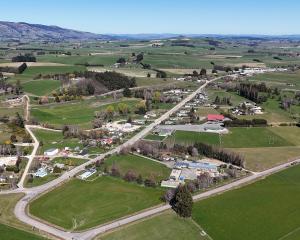
Niwa (Lauder) climate scientist Gregor Macara said while no temperature records were broken in Otago or Southland, they were generally above average — particularly in Dunedin, where the mean May temperature was "well above average" at 11.3°C — 1.7°C above normal.
Manapouri recorded New Zealand’s lowest temperature of the month, when the mercury dropped to -5.0°C on May 19.
Rainfall was below normal or well below normal for southern, central and eastern parts of Southland and Otago, much of Canterbury and parts of the West Coast.
However, it was above normal or well above normal for Western Southland, he said.
New Zealand’s wettest location compared with normal was Cape Campbell, in Marlborough, which received 94mm of rain (200% of normal).
The country’s driest location compared with normal was Middlemarch, which received just 21mm of rain (30% of normal).
Mr Macara said Dunedin’s rainfall for the month was also below normal with 32mm — about half the normal amount.
However, Queenstown almost broke its one-day rainfall record when 58mm fell in 24 hours on May 8, making it the town’s second-highest one-day rainfall total.
Soil moisture at the end of May was drier than normal for Dunedin and southern Otago, but it was generally near normal elsewhere, he said.
In terms of wind speeds, Middlemarch had its highest wind gust on record when wind speeds reached 137kmh on May 25.
Then on May 31, strong west-to-southwest winds brought down trees in Invercargill, with reports of lifting roofs there and in Dunedin.
"Invercargill City Council closed Queens Park due to the risk of tree fall," Mr Macara said.
"Power lines were also downed in southern parts of the South Island, with power outages reported for approximately 8000 customers, particularly about Invercargill, Hedgehope, Balclutha, SH8 from south of Milton to Lawrence, Otago Peninsula and Warrington to Karitane (north of Dunedin).
"Four flights to Dunedin Airport were unable to land and were diverted due to the strong winds," he said.
South West Cape, on Stewart Island, recorded its highest wind gust when it reached 187kmh on May 31; and Oamaru had a gust of 96kmh on the same day — its third-highest on record.
Mr Macara said the month’s overall weather was shaped by higher-than-normal mean sea level air pressure (MSLP) over and surrounding New Zealand, and lower-than-normal to the south of the country.
"This resulted in more westerly airflows than usual over the southern South Island.
"The prevalence of high MSLPs and marine heatwave conditions surrounding most of New Zealand contributed to extended periods of warm weather.
"It was an especially warm month for inland and southern parts of the South Island, where May temperatures were typically at least 1.5°C higher than average."
He said the nationwide average temperature was 11.9°C, making it New Zealand’s 10th-warmest May on record.
The end of May also marked the end of the autumn season (March-May), which was the fifth warmest on record.












